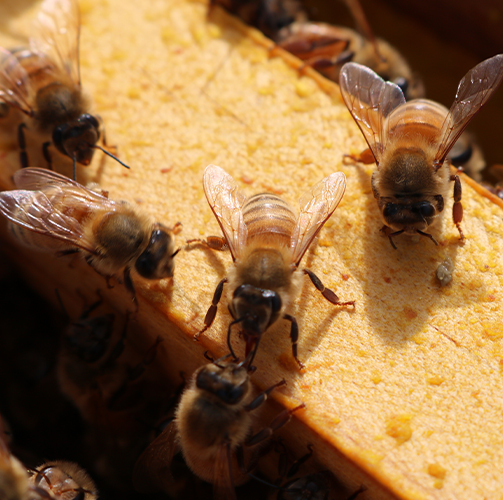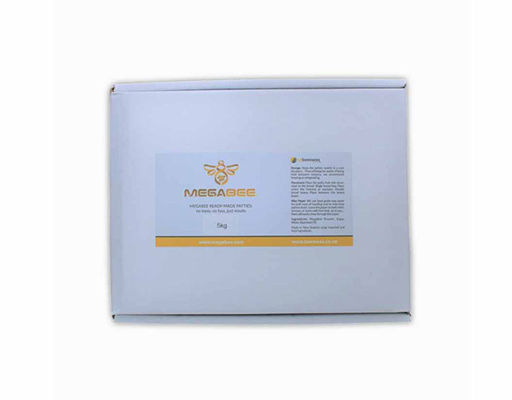

Better Beekeeping with Technology
The buzz on high-tech apiculture: we look at how innovation is changing the way Kiwi beekeepers operate.
How sweet it is to be a honey lover in New Zealand. Thanks to this country’s stunningly rich biodiversity, unique climate zones and clean environment, ‘Godzone’ is known around the world for its first-class honey production capabilities. But the honey industry is highly dynamic and ever evolving, both in terms of the myriad challenges beekeepers and honey producers face, and the powerful new tools being deployed to meet those challenges.
Unpredictable weather
It’s also an industry that’s heavily affected by climate. Bee colonies are very sensitive to temperature changes, humidity and rainfall patterns, and one bumper year can easily be followed by a rotten one, so every season is an exercise in making honey while the sun shines. “It’s all about having your hives at good strength when there's nectar flow,” says Arataki Honey manager Rhys Flack. “Nice runs of hot weather over summer will yield abundant flowering and the bees will keep working – night and day, virtually – if there is that nectar flow available.”
“But when we're not getting that prolonged period of good weather, the bees might harvest for one or two days, and then be inside the hive for another two. Wet or cold weather for extended periods is just not sufficient to produce that nectar flow excess we can harvest.”
“The priority is always to keep your hives as healthy and alive as possible so we can get through to the next year when maybe things improve.” That forward thinking has worked for Arataki Honey so far – the company will be celebrating its 80th anniversary next year. A household name in New Zealand, and a successful, vertically integrated family business, Arataki Honey produces a wide range of honey products for the local and international market, including Mānuka honey - famous for its unique antibacterial properties and health benefits.
Hive minds: gathering data
With hives and processing sites spread across the country, centralised access to timely, reliable operational data is crucial for decision-making at Arataki’s head office in Havelock North. “It’s so important to be able to access accurate information quickly, so that’s where technology comes in,” says Flack. “We need to be able to make decisions quickly and we need to know where to focus our energies and resources.”
Enter the BeeApp, a New Zealandbuilt SaaS (software as a service) tool designed to help commercial beekeepers, honey producers and queen breeders optimise their operations across the whole honey value chain. Providing “precision apiculture from hive to jar”, BeeApp brings modern data and intelligence capabilities to the unpredictable business of beekeeping, letting users manage their hives and sites, select the best queen bees, track boxes, supervise honey inventory, view lab results, and manage complex compliance obligations and more. With modules across queen rearing, beekeeping, extraction and blending, and inventory and warehouse, BeeApp covers the entire value chain of a beekeeper.
“Before we had BeeApp, every beekeeper had their own manual book in which they wrote down what they did today and what they were going to do tomorrow,” says Flack. “But for overall management, we need that information in one central place where we can quickly see where we’re at, because we're operating 10,000 hives just here in Hawkes Bay and we’ve got 15 beekeepers out on the road, so there are a lot of moving parts.” “We need to make sure the hives have feed on them, we need to know if someone is behind on getting certain tasks done, or if we should put resources into a particular area.”
Now into its second season using BeeApp, easy access to key operational data from across the business means that Arataki Honey HQ can quickly get an overview of operations at any time. “We can look up where a particular beekeeper is at with their varroa treatments for example, we can see how many strips they’ve put in, how many boxes of honey they’ve got, what was the last run of production that they took off their on-average yield, what type of honey was collected and more.”
“All that key information is recorded on every visit and that’s the key point we want to know, because it helps us determine the strength of the hive. How is the queen's laying? How many frames of bees are there? Are there enough bees there to keep the queen sustained through winter?” “With BeeApp, all that key information is compiled and easily accessible, it’s available to us instantly, and that's what we need to make better decisions, operate more efficiently and keep costs down.”


Changing forecasts
The ability to quickly access accurate and up-to-date information was at the heart of Arataki Honey’s deft management of February’s Cyclone Gabrielle. “Here in Hawkes Bay we lost about 480 hives - about five percent of what we have here,” says Flack. “But working through BeeApp, even by the next day we already knew where we were at. We had an accurate snapshot of the situation, we knew where we needed to put the work in, and where we needed to pool resources.” From major weather events to sudden swings in the market, the apiculture industry is nothing if not volatile. International demand for mānuka honey – driven by the products’ unique health benefits – has soared in recent years. Produced only in New Zealand and parts of southeastern Australia, international demand has seen strict authenticity and quality regulations put in place in New Zealand (as well a trans-Tasman battle over the mānuka honey trademark).
Certification is done by way of the MPI mānuka standard - tests for four nectar chemicals and one DNA marker from mānuka pollen – which are administered by third-party certified laboratories. “The honey industry is a compliance-heavy industry - and has become even more so over the last decade,” says Dale De Luca, cofounder and director of Bee Intelligence. “For beekeepers, those obligations can be really quite onerous, especially when it comes to processing honey for export, so BeeApp digitises that process enabling seamless audits and full traceability – from hive to the jar.”
For BeeApp users looking to export mānuka honey, those MPI mānuka standard test results can be automatically associated with the correct batch in-app, providing end-to-end traceability of a honey product in a digital form, reducing regulatory compliance costs to create a marketable product. “There’s no manual paperwork and no sticky pieces of paper required,” says De Luca. “All the processing and tracking of the honey to its destination, and all of those data lab and test results are all recorded in-app and automated.” “BeeApp really does make a big difference to the lives of beekeepers. Even the honey auditors love what we do, because it makes their jobs easy too.” And with many smaller Kiwi honey producers currently exiting the market because of increased costs and lack of ability to move their product, efficiency of operations is crucial for those hoping to thrive in the international market.
“The industry has been through a bit of a boom/bust cycle,” says Flack, “driven by the high return people were getting from mānuka honey.” Indeed, with mānuka honey prices topping $20 per kg, a rush of new beekeepers entered the industry in a short time, disrupting production levels and causing widespread ripples in pricing. “New Zealand went from about 300,000 hives, up to nearly a million,” says Flack. “But I think some of those new entrants were surprised to find that with beekeeping, not every year is a good year, so the numbers have been trending down, probably back to a more sustainable level for the market. We were in an overproduction situation with honey getting stored and not sold and that's not good for pricing.”
Add a myriad of other challenges - increasing costs, labour shortages, as well as the constant need to tread with a lighter environmental footprint – and it’s a challenging environment for honey producers needing to stay profitable. "If prices are low you've got to be pretty sharp just to get a profit at the end of the year,” says Flack. “A lot of things have got to go right for you, so this is where BeeApp has helped us reduce those costs. Being as efficient as possible is the only way we're going to stay in business.”
If Arataki Honey is any example to go by, the future of the honey industry in New Zealand may belong to those who can leverage the technology the best. “New Zealanders have always been very good at picking up new things and new practices and adopting technology as a tool to make things better,” says De Luca. “If you look at the overseas markets, particularly the US, they're going through a profound intergenerational change right now, where sons and daughters are picking up the business from their parents or their grandparents and they're demanding applications to make things easier.”
“In New Zealand that's been happening for a while. We’re lucky in this country - we’ve got some really forward-thinking companies in the industry.” “Even those companies that have been around for a long time, they’re embracing the technology, and because of that they're surviving and thriving.”
FEATURED PRODUCTS



MegaBee Patties 5kg
MegaBee is a highly optimized, exceedingly palatable pollen supplement built with honey bee help. This is specifically formulated to be a product that bees not only eat but as one that they actually prefer.

Hive Alive 500ml
Developed specifically for honeybee health and contains a unique blend of seaweed extracts (not just what rolled up on the beach) as well as thymol and lemongrass oil.